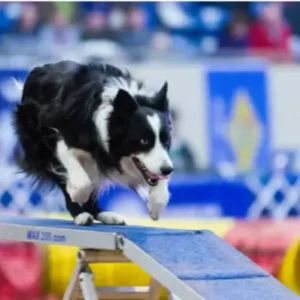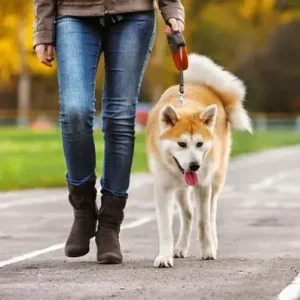Preparing for Training
Effective training starts with preparation.
- Set Expectations: Understand that this process takes time and consistency.
- Gather Tools: Use treats, clickers, or toys for positive reinforcement.
- Create a Positive Environment: Train in a quiet, distraction-free space.
Training Techniques
When it comes to training your dog to stop barking, consistency and patience are essential.
Here are the most effective techniques to help curb excessive barking:
Ignore the Barking
Reacting to your dog’s barking—even negatively—can inadvertently reinforce the behavior. Instead, stay calm, avoid eye contact, and refrain from shouting. Ignoring the barking teaches your dog that this behavior won’t get your attention.
Teach the “Quiet” Command
Training your dog to understand the “Quiet” command is a highly effective way to manage barking dog:
- Allow your dog to bark a couple of times.
- Hold a treat near their nose and say “Quiet” in a calm, firm voice.
- When they stop barking, immediately reward them with a treat and praise.
- Repeat consistently until your dog associates “Quiet” with stopping barking.
This technique works best when practiced regularly in a controlled environment.
Desensitization
If your dog barks at specific triggers, such as the doorbell or passing cars, desensitization can help. Gradually expose your dog to the trigger at a low intensity:
- For example, ring the doorbell softly and reward your dog when they remain calm.
- Gradually increase the volume or proximity of the trigger over time.
This method builds your dog’s tolerance and reduces their reactive barking.
Redirecting Behavior
When your dog starts barking, redirect their focus to an alternative activity. Offer them a toy, initiate a trick like “sit” or “shake,” or engage them in a short game. By shifting their attention, you prevent barking from becoming a habit in that situation.
Use Positive Reinforcement
Positive reinforcement is a powerful tool for reinforcing desired behaviors. Whenever your dog remains calm in a situation that would usually provoke barking, praise them enthusiastically and offer a treat.
Over time, your dog will associate calm behavior with rewards, making it more likely for your dog to be quiet in similar situations. These dog training tips will help teach your furry friend to stop barking unnecessarily.
Addressing Specific Barking Triggers
Understanding the root cause of your dog’s barking is the first step toward effective training, and these strategies can help address specific triggers.
- Strangers or Other Dogs: Use desensitization and the “Quiet” command to build confidence.
- Separation Anxiety: Gradually condition your dog to feel comfortable being alone by leaving for a short period of time and rewarding calm behavior upon return.
- Boredom: Provide plenty of exercise and mental stimulation through walks, puzzles, or interactive toys.
When to Seek Professional Help
If your dog’s barking persists despite your efforts, consider consulting a professional dog trainer or behaviorist. Persistent barking could also indicate underlying health issues, so a vet check-up might be necessary.
Preventive Tips
Prevention is always better than cure. By incorporating these preventive measures into your dog’s daily routine, you can significantly reduce excessive barking and promote better behavior overall:
- Ensure your dog gets adequate physical and mental exercise.
- Create a structured routine to reduce anxiety and promote calm behavior.
- Consistency is key—ensure all family members follow the same training approach.
These proactive steps lay the foundation for a well-behaved and content dog.
Common Mistakes to Avoid
While training your dog to stop barking, it’s easy to fall into some common traps that can hinder progress. Avoiding these pitfalls will make the training process smoother and more effective:
- Yelling or Punishing: This can increase anxiety and worsen barking.
- Inconsistency: Mixed messages confuse your dog and slow down progress.
- Neglecting Health Issues: Barking could stem from pain or discomfort.
By steering clear of these mistakes, you can ensure a more positive and successful training experience for both you and your dog.








